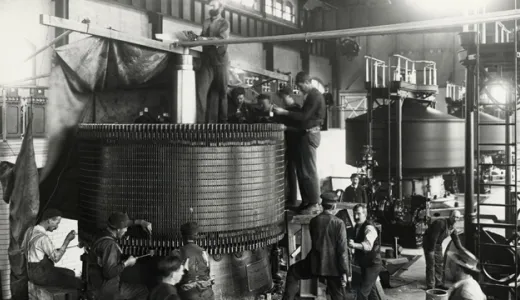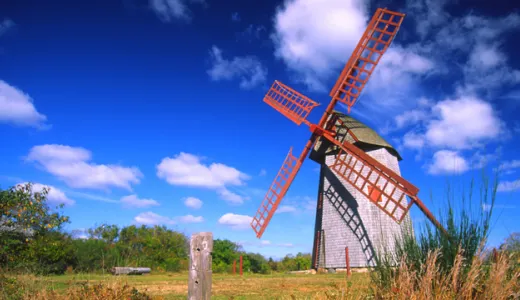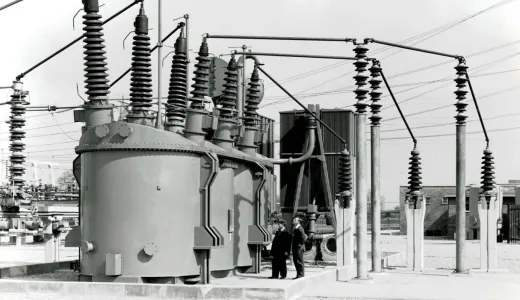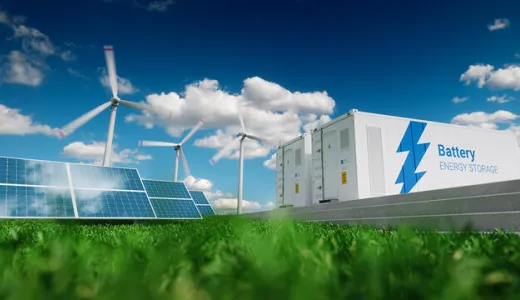The history of energy in the UK
What were the earliest sources of energy? Who discovered electricity and when? In some ways, we’ve come full circle when it comes to energy. Ironically, the first sources of energy were the sun and wind, and here we are again looking to those; albeit in more technologically advanced ways. Here we look at the history of energy and the key discoveries and inventions along the way to where we are now.
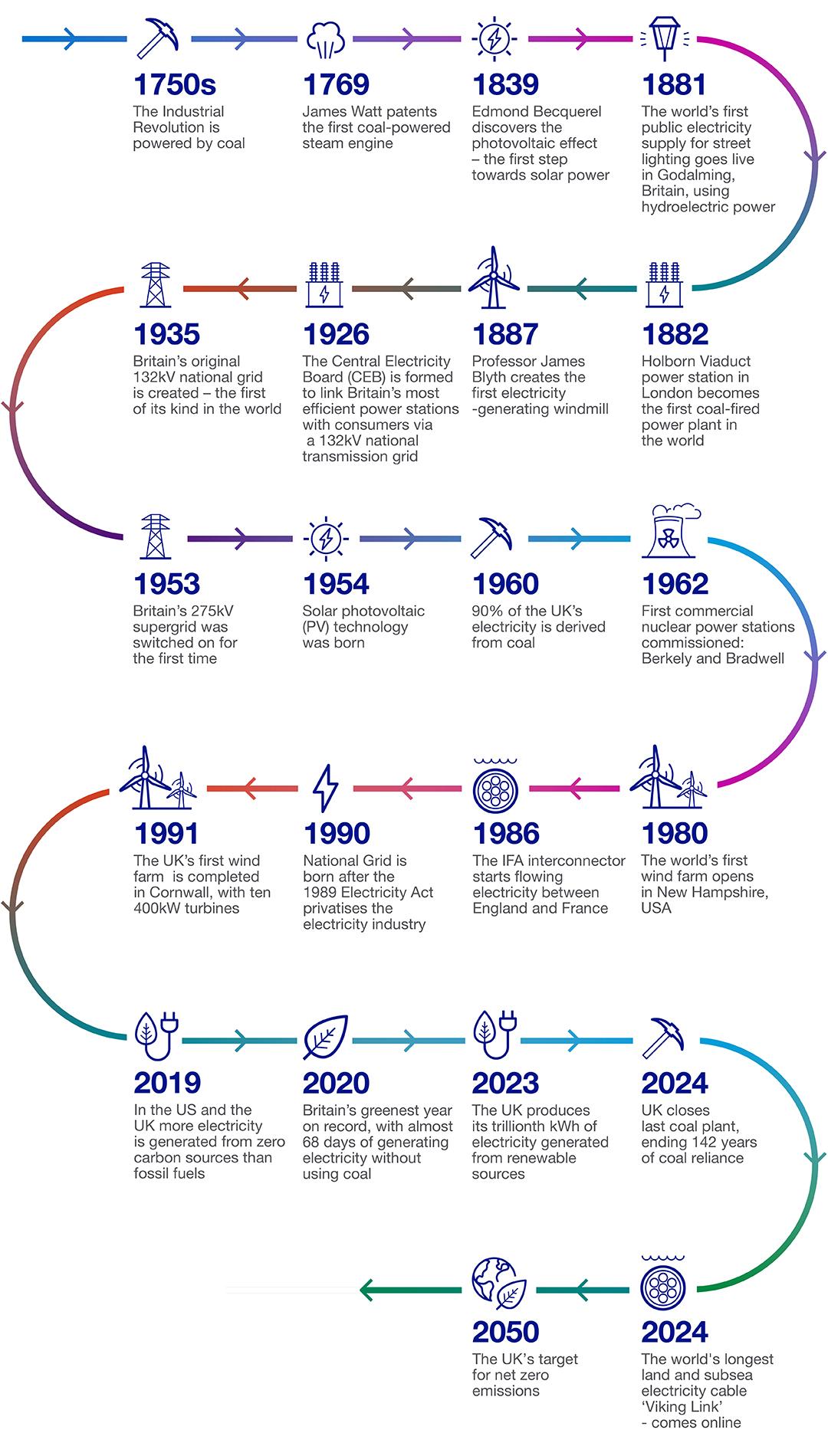
What was the first source of energy?
Energy has been around since the dawn of time. The first source of energy was the sun, as it provided heat and light during the day. People rose and slept with the light, relied on wood and dung burning for heat, and water power to generate basic mills.
Who discovered electricity and when?
The Industrial Revolution kick-started our use of human-generated electricity. Most people credit Benjamin Franklin with 'discovering' electricity in 1752, which he did by realising that the sparks emitted from lightning strikes could generate power.
When was coal first used to produce power for transport and industry?
From 1750, coal was used to power tools and machines and, in 1769, James Watt patented the world’s first coal-powered steam engine. It was thanks to this machine that steam engines became more powerful and efficient – this made them perfect for use in factories and mills, as rates of production could increase.
What year did the UK gas industry begin to develop?
The UK’s gas industry was born in 1812. Britain was still at war with Napoleon when Frederick Winsor created the first company in the world to build a public gas works and distribute gas to customers through a network of underground pipes. This business opened up the markets for gas; something that would transform the everyday life of millions of people, as they got their first taste of reliable light, heat and energy.
Gas was used to light London’s streets and the original gas-powered lamp posts still exist dotted around St James in London. By 1827, London’s network provided gas to almost 70,000 streetlights.
When was photovoltaic energy discovered?
But if you thought early energy was just coal fires and wood, think again. The first step toward harnessing the energy of the sun happened in 1839, when Eduard Becquerei discovered photovoltaic energy; one of the first processes in solar power.
What developments came about in the power sector during Victorian times?
The Victorian period was when the world witnessed enormous advancement when it came to energy. The first hydro-electric plant started operating in Cragside in the UK in 1878 and, in 1888, Cleveland Ohio became home to the first windmill that generated electricity. The world’s first coal-fired power station, the Edison Electric Light Station, was built in London in 1882, with the promise of supplying light and warmth to London homes.
What energy sector developments occurred in the early 20th Century?
Into the 20th century and we see a flurry of electrical ingenuity. John Logie Baird gave the first public demonstration of the television in 1926 and the BBC then opened its doors in 1927. Electricity was now pumping to people’s homes and thanks to pylons – structures modified based on a design submitted by the Milliken Brothers (engineers based in the US) to a competition run by the Central Electricity Board (CEB) in 1927 and which stylish design was chosen by architect Sir Reginald Bloomfield – the country is linked with electricity.
When did the first national grid system open?
The world’s first integrated national grid opened in 1935. Rather than having a host of small power stations, just seven grid areas were created to cover the UK. These were located in Manchester, Leeds, Newcastle, Birmingham, Bristol, London and Glasgow. Thanks to the National Grid, energy supplies became cheaper and more stable.
As the 20th century wore on, coal and gas continued to supply most of the energy across the UK. By 1960, 90% of all power is still powered by coal. The end of the last century is when energy finally became greener and the terms climate change and climate crisis became buzzwords. The world’s first windfarm opened in New Hampshire in 1980, shortly followed by the UK’s first windfarm in 1991, located on the blustery Cornish coast.
Which is more important in the UK, renewable power or fossil fuels?
2019 heralded a milestone. After years of relying on coal for energy, for the first time, in both the UK and the US, more energy was generated from zero carbon sources than fossil fuels. By using renewables to power our energy, we’re well on our way to meeting our 2050 UK target for net zero total emissions.
How is the UK switching to more clean, renewable energy?
To make sure that we all have access to more clean energy and that our electricity network is fit for a net zero future, we’ve launched The Great Grid Upgrade – the largest overhaul of the electricity grid in generations. Our infrastructure projects across England and Wales are helping to connect more renewable energy to your homes and businesses.
Find out more about The Great Grid Upgrade
Last updated: 13 Oct 2023
The information in this article is intended as a factual explainer and does not necessarily reflect National Grid's strategic direction or current business activities.
